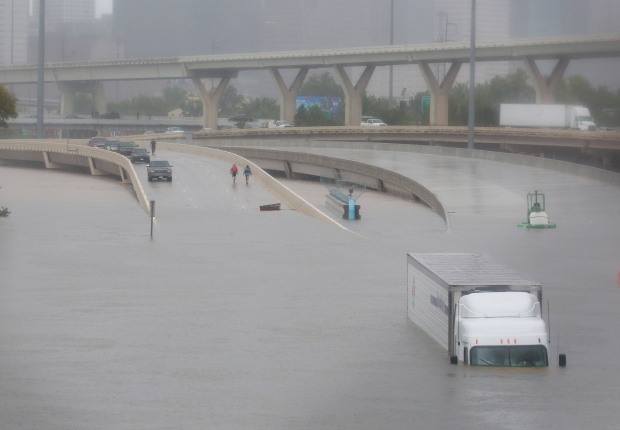Spot Truckload Capacity Tightens, Rates Rise after Harvey
The number of loads on the spot truckload freight market fell 3% during the week ending Sept. 9, which included the Labor Day holiday and supply chain disruptions caused by two hurricanes, said DAT Solutions.
Truckload capacity tightened further, with truck posts down 15% compared to the previous week (a 20% reduction is typical for a holiday week). Van and flatbed load-to-truck ratios increased as a result:
– Van L/T ratio: 6.6 (up 17%)
– Flatbed L/T ratio: 34.4 (up 29%)
– Reefer L/T ratio: 11.3 (down 2%)
Diesel prices continued to climb, rising 4 cents to $2.80/gallon as a national average. Higher fuel prices put pressure on spot rates compared to the previous week:
– Van: $1.93/mile, up 3 cents
– Flatbed: $2.24/mile, up 4 cents
– Reefer: $2.18/mile, up 8 cents
Nationally, van load posts declined 3% and truck posts lost 17%. Houston freight levels bounced back to 88% of where they were before Hurricane Harvey, a remarkable achievement considering that the rebound happened during a four-day holiday week.
Reefer load posts declined 10% and truck posts fell 8% compared to the previous week. Outbound reefer rates in Atlanta rose 6 cents to an average of $2.46/mile as freight hubs in the Southeast helped to re-stock markets in Arkansas, Louisiana, and Oklahoma that are usually served out of Houston. In Dallas, demand for reefer trucks led to a 19-cent increase to an average of $2.26/mile outbound.
Flatbed load posts increased 4% nationally due in part to the need to move relief supplies and heavy equipment in Houston and Louisiana. Available capacity fell 20%—in line with expectations given the holiday week and the unusual pressures on the supply chain.
How Hurricanes Harvey and Irma Affected Freight Flows
Hurricane Harvey and Irma forced supply chain managers to make quick decisions about how to route their freight.
After Harvey, some shippers began to supply markets ordinarily served by Houston from regional hubs in the Southeast, including Atlanta, Charlotte, and Memphis. With Irma headed toward Florida, those same distribution centers re-focused and moved freight south instead of west. Meanwhile, the Midwest had to supply the Northeast to compensate for the freight that would otherwise arrive from Atlanta. And the Midwestern warehouses were called on to supply Colorado, which is often served by Houston.
Category: Featured, General Update, News











